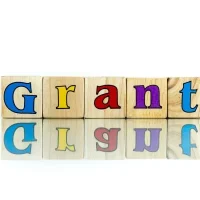In the competitive landscape of grant applications, storytelling emerges as a powerful tool that can set your proposal apart from the rest. While data and statistics are essential components of any grant application, they often fail to resonate on a personal level with reviewers. Storytelling allows you to weave a narrative that not only highlights the significance of your project but also connects emotionally with the reader.
By presenting your mission through compelling stories, you can illustrate the real-world impact of your work, making it more relatable and memorable. Moreover, storytelling in grant applications is not merely about embellishing facts; it is about creating a cohesive narrative that encapsulates the essence of your organization and its goals. A well-crafted story can evoke empathy, inspire action, and ultimately persuade funders to invest in your vision.
As you embark on the journey of writing your grant application, consider how you can harness the art of storytelling to convey your message effectively and authentically.
Identifying the Key Message and Impact of Your Project
Defining Your Project’s Purpose
Ask yourself: What problem are we addressing? Who will benefit from our work? What change do we hope to see as a result? By answering these questions, you can distill your project into a clear and concise message that serves as the foundation for your storytelling.
Articulating the Impact of Your Project
Once you have identified your key message, it is essential to articulate the impact of your project. This involves not only outlining the immediate benefits but also considering the long-term effects on the community or population you serve.
Illustrating Impact Through Real-Life Examples
For instance, if your organization is focused on providing educational resources to underprivileged children, your key message might center around empowerment through education. The impact could be illustrated through stories of individual children who have transformed their lives through access to learning materials and support. By grounding your narrative in real-life examples, you can effectively communicate the significance of your work.
Effective Storytelling for Lasting Impact
Crafting a Compelling Narrative
With a clear key message and understanding of your project’s impact, you can begin crafting a compelling narrative that draws readers in. Start by setting the scene—paint a vivid picture of the challenges faced by your target population. Use descriptive language to evoke imagery that allows readers to visualize the context in which your organization operates.
For example, instead of simply stating that many children lack access to books, describe a classroom where students sit on the floor, eagerly sharing a single worn-out textbook. This approach not only captures attention but also establishes an emotional connection with the reader. As you develop your narrative, consider incorporating elements of conflict and resolution.
Every good story has a challenge that needs to be overcome, and this is where you can highlight the urgency of your project. Describe the obstacles faced by those you serve and how your organization is uniquely positioned to address these issues. By framing your project as a solution to a pressing problem, you create a sense of purpose that resonates with funders who are looking for impactful initiatives to support.
Incorporating Data and Evidence to Support Your Story
While storytelling is an emotional endeavor, it is essential to ground your narrative in data and evidence that lend credibility to your claims. Funders want to see that your project is not only well-conceived but also backed by research and measurable outcomes. Integrate relevant statistics, case studies, or testimonials into your narrative to reinforce your key message.
For instance, if you are seeking funding for a mental health initiative, include data on the prevalence of mental health issues in your target population alongside personal stories of individuals who have benefited from your services. When incorporating data, strive for balance—too much emphasis on statistics can detract from the emotional resonance of your story, while too little can undermine its credibility. Aim for a seamless integration where data complements rather than overshadows the narrative.
For example, after sharing a poignant story about an individual’s journey through mental health challenges, follow up with statistics that highlight the broader context of mental health issues in your community. This approach not only strengthens your argument but also reinforces the urgency of addressing these challenges.
Engaging the Reader with Emotional Appeals
Emotional appeals are at the heart of effective storytelling in grant applications. To engage readers on a deeper level, tap into universal emotions such as hope, compassion, and resilience. Use anecdotes that illustrate the human experience behind your project—stories that evoke empathy and inspire action.
For instance, share a story about a single mother who struggled to provide for her children but found support through your organization’s programs. Highlight her journey from despair to empowerment, showcasing how your work has made a tangible difference in her life. Additionally, consider using vivid language and sensory details to enhance emotional engagement.
Describe not only what individuals experience but also how they feel—what it’s like to face adversity and what it means to receive support from your organization. By painting an emotional picture, you invite readers to connect with your cause on a personal level, making them more likely to support your project.
Using Storytelling to Address Challenges and Solutions
Every project faces challenges, and acknowledging these obstacles can enhance the authenticity of your narrative. Rather than shying away from difficulties, use storytelling as an opportunity to demonstrate resilience and innovation in overcoming them. Share specific examples of challenges encountered during previous projects or initiatives and how your organization adapted its approach in response.
This not only showcases your capacity for problem-solving but also builds trust with funders who appreciate transparency. In addition to addressing challenges, emphasize the solutions that your organization offers. Highlight successful strategies or interventions that have led to positive outcomes in similar situations.
For instance, if you are applying for funding for a community health initiative, discuss how previous programs have successfully reduced health disparities through targeted outreach and education efforts. By framing challenges as opportunities for growth and learning, you position your organization as proactive and capable—qualities that funders value.
Concluding with a Call to Action
As you wrap up your grant application narrative, it is essential to conclude with a strong call to action that inspires funders to take the next step. Reiterate the significance of your project and its potential impact on the community or population you serve. Encourage funders to envision themselves as partners in this journey—highlight how their support will directly contribute to meaningful change.
A compelling call to action should be clear and specific. Instead of simply asking for funding, articulate how their investment will make a difference—whether it’s providing resources for educational programs or supporting mental health services for vulnerable populations. By inviting funders to be part of something larger than themselves, you create a sense of urgency and purpose that motivates them to act.
Tips for Polishing and Refining Your Storytelling in Grant Applications
Once you have crafted your narrative, take time to polish and refine it before submission. Start by seeking feedback from colleagues or peers who can provide fresh perspectives on clarity and engagement. Consider their suggestions carefully—sometimes an outside viewpoint can reveal areas for improvement that you may have overlooked.
Additionally, pay attention to language and tone throughout your application. Ensure that it aligns with the values and mission of your organization while remaining accessible to readers who may not be familiar with technical jargon or industry-specific terms. Aim for a conversational yet professional tone that invites readers into your story without alienating them with overly complex language.
Finally, practice reading your narrative aloud—this can help identify awkward phrasing or areas where the flow may be disrupted. A well-polished story not only enhances readability but also reinforces the professionalism of your application as a whole. In conclusion, storytelling is an invaluable asset in grant applications that can elevate your proposal from ordinary to extraordinary.
By identifying key messages, crafting compelling narratives, incorporating data, engaging emotionally, addressing challenges, concluding with calls to action, and refining your storytelling skills, you can create powerful applications that resonate with funders and inspire them to support your mission.








































